Last weekend Konnor Jenson and I visited Moab, Utah, to scout for junipers. As both of us have a deep appreciation for pines, we found – to no one’s surprise – pines!
Pinyon pines have a number of characteristics that are great for bonsai. The needles are small, the branches are nimble, and when grown in harsh conditions, they can exhibit great movement and deadwood. As a result, the transformation from collected tree to bonsai can be quick (you can see a good example of this from Michael Hagedorn). Assuming, of course, that you can dig the tree in the first place.
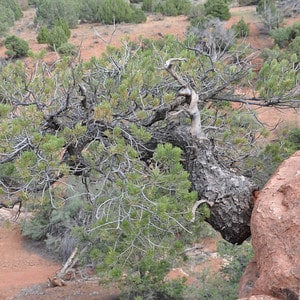
Pinyon growing out of cliff
The tree pictured above is a bit large for bonsai, but it has wonderful taper and movement as well as some interesting deadwood. The problem – it’s growing out of a cliff! No Karate Kid rope tricks would help as the tree has one main root that drills straight into the mountain. The tree will stay put a while longer, but maybe not forever as much of the “rock” around Moab is red sandstone. Sandstone’s softness makes digging trees easy, but it also facilitates roots that can run 5, 10, or even 20 feet before dividing into the small feeder roots that are necessary for keeping trees alive. As the cliff face continues to erode, the tree’s long-term future is uncertain.
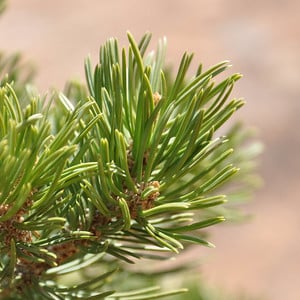
Typical pinyon foliage – tight clusters of short, light-green needles
Many of the junipers we found had twists and twirls, but very few exhibit the snake-like movement that’s more characteristic of mountain junipers. Desert pinyon, on the other hand, frequently exhibit wonderfully sinuous movement.
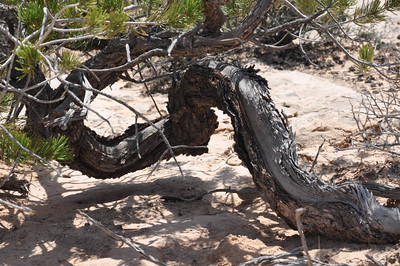
Sinuous movement
Which is what we look for in bonsai. The tree above snakes just above the ground with wonderful twists showing off well-aged deadwood. Taking a closer look can be instructional. The oldest deadwood is on the lower part fo the trunk – the oldest part of the tree. The deadwood is also on the upper side of the trunk – the part most exposed to the elements. Its location reveals the spots where force, whether sand, sun, wind or snow, must have been applied to the tree in order to knock it over and force it to grow along the ground. The deadwood, in other words, tells the tree’s story.
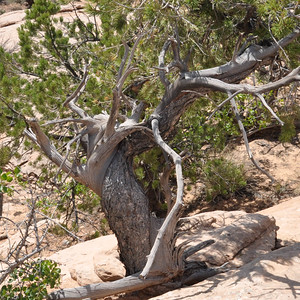
Twists in the trunk
The tree above has great twists – good evidence that it’s growing in a windy spot. The largest areas of deadwood are on the left and the trunk line proceeds to the right. The odds are good that the stressors that produced this shape came from the left – south in this case.
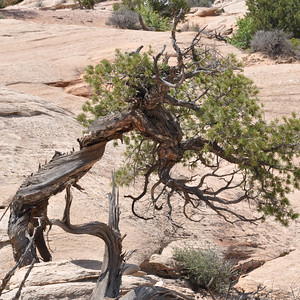
Great movement
This pinyon exemplifies the characteristics that inspired the bunjin or literati style. Far too big for bonasi (about 10 feet tall) this tree is growing about halfway up a small ridge. It has good movement, taper (for bunjin) and deadwood – we stopped to appreciate this one for a while.
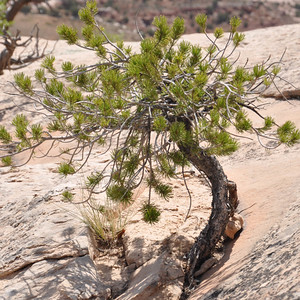
Let it grow
What of this little guy? It’s cute and easy to dig but doesn’t tell a story like the trees pictured above. Let it grow – it may yet experience something worth sharing with a future generation.
Subscribe to Bonsai Tonight
New Posts Delivered Every Tuesday and Friday
Chac Duong says
Where can I go to collect such plants like California Junipers?
I live in Orange County, CA.
xwires says
Hi Chac – I’d check with a local bonsai organization and see if they have recommendations about where to collect California Junipers. For mountain trees, you can contact the appropriate forest service and check to see if permits are available. As I haven’t collected Californias, I’m not familiar with which organizations do or don’t allow collecting on the land they manage.